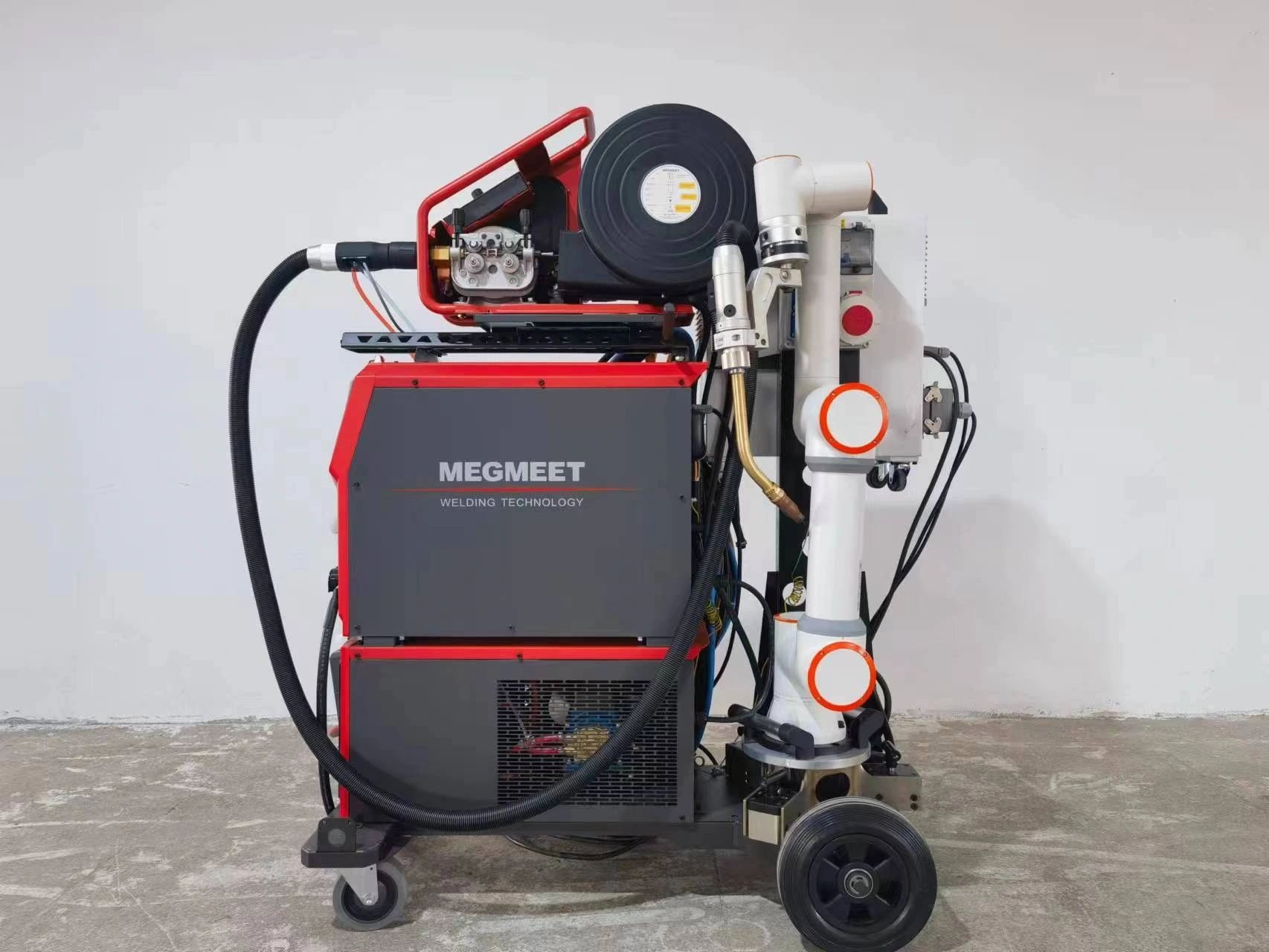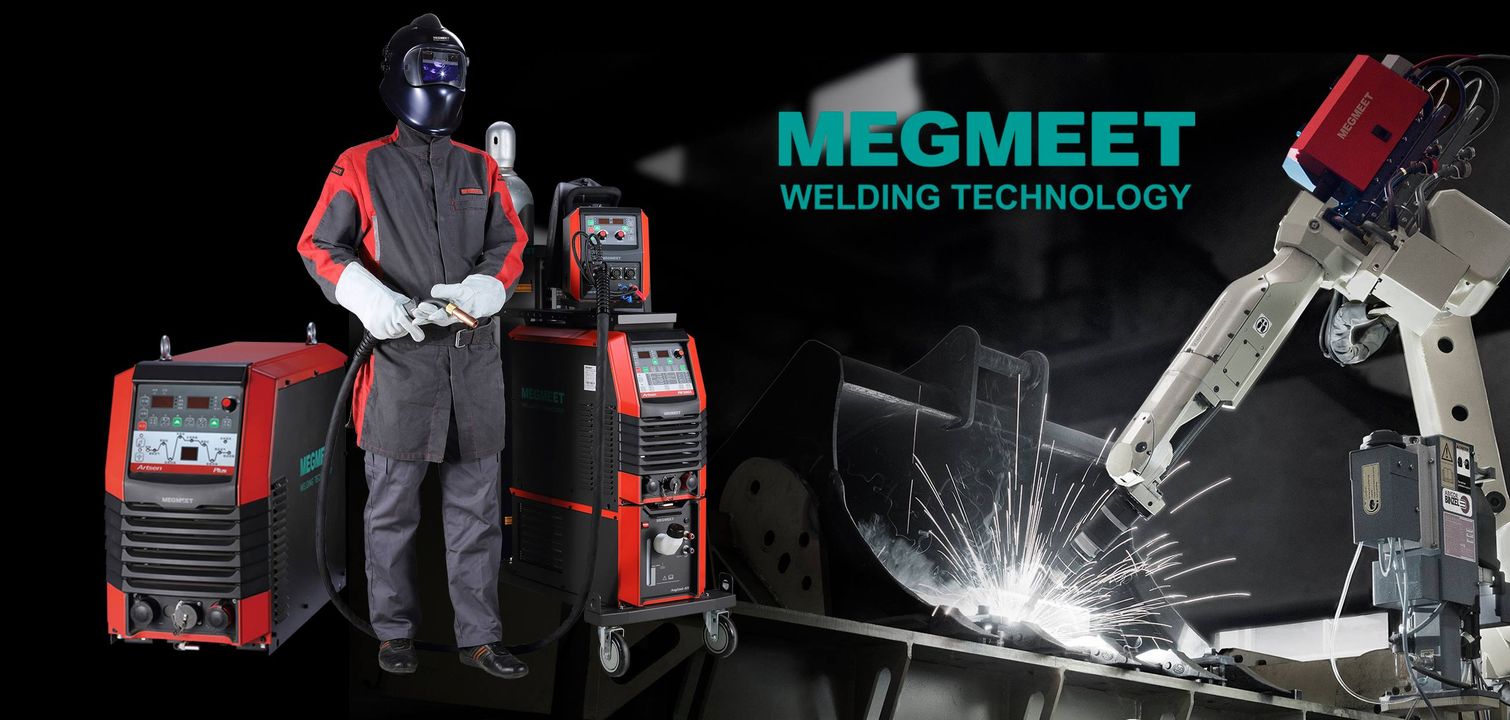Collaborative robots—better known as cobots—have quickly gone from a novel automation concept to a practical tool reshaping how welding is done in fabrication shops. For small to mid-sized manufacturers, cobots offer a unique middle ground: the consistency and output of automation, without the complexity, size, or cost of traditional industrial robot systems.
In this guide, we’ll walk you through what cobot welding is, how it compares to traditional robotic welding, and why it might be the best next step for your production floor. Whether you're battling labor shortages or looking for a more efficient way to meet delivery deadlines, this article will help you evaluate cobot welding from a technical and investment standpoint.

I. What is Cobot Welding?
Let’s start with the basics. A collaborative robot, or cobot, is a type of robotic system designed to work in direct cooperation with humans. In contrast to traditional industrial robots, which are typically housed in fenced-off areas due to safety concerns, cobots are designed to operate safely in open environments—right next to people.
Cobot welding systems integrate these collaborative arms with advanced welding power sources to automate MIG, MAG, or TIG welding tasks. Their design prioritizes flexibility, ease of use, and quick deployment. For many fabricators, especially those with high-mix, low-volume workflows, this can be transformative.
Key advantages of cobot welding:
Consistent quality: Cobots maintain the same torch angle, travel speed, and arc length every time, reducing variability and improving overall weld integrity.
Increased output: Cobots can run longer hours with fewer breaks and no drop in focus or precision—ideal for jobs with tight deadlines.
Reduced onboarding time: Welders can learn to operate cobots in hours, not weeks.
Minimal disruption to shop layout: Most cobots can be mounted on standard workbenches or welding tables without structural modifications.
Better working conditions: Cobots handle repetitive welds, freeing up skilled operators for more complex, value-added work.
II. Cobot Welding vs. Traditional Robotic Welding
Industrial robot welding systems have been around for decades, primarily in automotive plants where they're used to weld the same parts thousands of times a day. These systems are fast, powerful, and consistent—but they’re also rigid, complex, and require significant upfront investment in both equipment and infrastructure.
Cobot welders, by comparison, are built for versatility. They’re ideal for smaller batch production, frequent part changes, and compact shop environments.
Here’s how the two approaches stack up:
| Aspect | Cobot Welding | Traditional Robotic Welding |
|---|
| Programming | Drag-to-teach, visual UIs, no code required | Complex coding, proprietary languages |
| Safety | Built-in sensors for force and speed | Requires cages, scanners, E-stops |
| Footprint | Small, fits in manual welding cells | Large, fixed cell with guarding |
| Re-deployability | Easy to move between jobs | Stationary; high changeover cost |
| Operator Skill | Accessible to technicians and welders | Requires robotics engineers |
| Ideal Use Case | High-mix, low-volume (HMLV) | Low-mix, high-volume (LMHV) |
Where traditional robots are optimized for repeatability and speed at scale, cobots are optimized for agility and operator collaboration.
III. The Upside to Programming a Cobot
One of the biggest hurdles in robot adoption has always been programming. Conventional systems require either skilled programmers or weeks of training to learn specific code structures. This means higher onboarding costs and longer setup times—especially when switching parts or adjusting parameters.
Cobot welding flips that dynamic. Instead of code, operators guide the robot manually and define key points—start, end, corners—using a simple teach pendant or touchscreen interface. It’s intuitive and quick.
Some cobot systems even support offline programming via drag-and-drop simulation software, letting users set up a new welding sequence while the cobot continues running another job.
Real benefit: You no longer need a dedicated robot programmer. Your welding team can do it all, reducing downtime and increasing autonomy on the shop floor.
IV. Step-by-Step: How to Program a Welding Cobot
While every manufacturer’s interface is slightly different, the general workflow of programming a cobot welding job is straightforward and repeatable. Here's a basic sequence:
Start a new job: Create a program tied to a specific part number or fixture setup.
Set weld parameters: Define arc current, voltage, gas flow, wire feed speed, torch travel angle, and contact tip-to-work distance (CTWD).
Guide the cobot: Manually move the arm to the weld start and end points.
Record waypoints: Save path positions using the teach pendant or touchscreen.
Run dry cycle: Observe torch path and adjust travel speed or trajectory.
Fine-tune and store: Save the program for future use and label it for repeatability.
Most operators can learn to do this in a day or two. You don’t need a robotics background—just basic welding knowledge and some time to practice.
V. What You Gain from Easy Programming?
Simplified programming doesn’t just reduce setup time. It has deeper implications across the entire operation:
Faster job transitions: With quick setup, shops can switch from part to part in minutes—not hours.
Empowered operators: Welders can program and adjust jobs themselves, without waiting for a technician.
Lower risk of errors: Visual feedback and playback ensure torch paths are accurate before production starts.
Scalable workflows: As you add more cobots, the same training applies across the board—no need to retrain for each station.
For small and medium manufacturers, these factors significantly lower the barrier to entry for automation.
VI. What Makes Up a Cobot Welding System?
A typical cobot welding system is modular and compact, combining:
Collaborative robot arm (typically 6-axis, 5–10 kg payload)
Welding power source (e.g. Megmeet Ehave CM series with double-pulse MIG, synergic control, or TIG capability)
Wire feeder and torch integrated with the robot wrist
Teach pendant or control tablet with a user-friendly interface
Welding table or fixture for part positioning
Shielding gas system and torch cleaning station (optional)
Safety accessories, such as arc screens, light curtains, or fume extractors
The modular design ensures quick deployment—most cobot cells can be fully installed and running production within 1–3 days of arrival.
VII. Welding Safety: Protecting Operators in Collaborative Workspaces
Even with cobots, safety is paramount. While these systems are inherently safer than high-speed robots, welding still involves risks—arc flash, hot surfaces, fumes, and spatter.
Here’s what a good cobot welding setup includes:
Force and collision sensors: Automatically stop movement upon contact.
Arc protection: Use arc screens or auto-darkening shields when cobots are operating in open areas.
Fume extraction: MIG and flux-core processes produce metal fumes; extraction arms or downdraft tables help maintain air quality.
Electrical safety: Proper grounding, overcurrent protection, and thermal cutouts are essential.
Operator PPE: Gloves, helmets, and jackets are still required when supervising or assisting cobots.
Safety isn't just about compliance—it's about sustaining a healthy, productive team.
VIII. Risk Assessment and Compliance
Before deploying any cobot welding system, a formal risk assessment must be conducted to identify, evaluate, and mitigate potential hazards. This process should be aligned with:
ISO 10218-1/-2: Safety requirements for industrial robots
ISO/TS 15066: Safety guidance specifically for collaborative robot applications
OSHA and CE compliance: Local regulations and standards
Risk assessment steps include:
Hazard identification (e.g., collision, fume, arc)
Risk scoring based on severity, frequency, and detectability
Mitigation selection (e.g., limiting force/speed, adding fume extraction, PPE protocols)
Validation and documentation
Periodic review and task list tracking
In short: cobots reduce risk, but proper integration is still key to a safe working environment.
IX. The Cost of Cobot Welding: A Breakdown
Initial system pricing varies depending on configuration:
Entry-level MIG cobot system: $35,000–$50,000
Mid-range solution with fume extraction and advanced torch cleaning: $60,000–$80,000
High-end system with multi-process support, touch sensing, and seam tracking: $100,000+
However, unlike traditional robots, cobot systems require:
Minimal programming expense
No fencing or safety scanners
Lower maintenance overhead
Most importantly, they often achieve full ROI within 12–18 months, depending on production volume.
Cobot Welding FAQ
Q1: How fast can a cobot weld?
Typical travel speeds range from 20–30 inches per minute, depending on material, process, and joint geometry.
Q2: Can I use a cobot if I don’t know robotics or coding?
Absolutely. Some cobots are built for welders. You don’t need to write a single line of code—just guide the arm and adjust weld parameters as needed.
Q3: What processes are supported?
Most cobots support synergic MIG/MAG, pulsed MIG, and TIG processes, optimized for steel, stainless, and aluminum.
Q4: Is this suitable for small shops?
Yes. Cobots are especially valuable for job shops with short production runs, part variety, and limited floorspace.
If you’re facing production bottlenecks or struggling to find skilled welders, cobot welding might be the most practical step forward. For more details, get in touch with the Megmeet welding team—we’ll walk you through it, no pressure.

Related articles:
1. Robots & Cobots Revolutionizing Welding Automation
2. Megmeet 1,500 Robot Welding Power Sources Signing Ceremony!
3. Collaborative Robotic Welding: Enhanced Precision and Efficiency
4. Best 5 Arc Welding Robot Brands in the World (2024)
5. A Comprehensive Guide to Robotic Welding in Modern Manufacturing
6. 5 Reasons to Use Cobots for Laser Welding: Power and Integration





